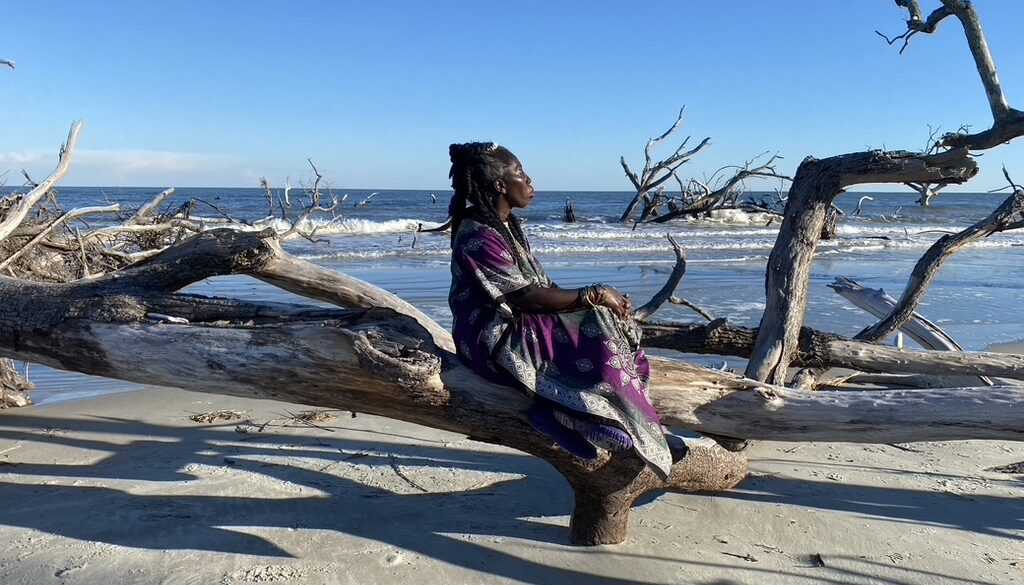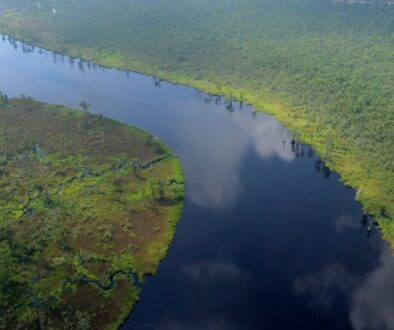Industrial chemicals threaten hunting and fishing traditions
For more than a century, members of the indigenous Penobscot Nation, who live along the Maine river from which they take their name, have mourned the loss of the migratory fish that sustained their ancestors.
Dams built by developers in the 19th and early 20th centuries along the Penobscot River cut off access to the ocean, preventing native fish from returning each year to spawn in their historic habitats.
A years-long restoration project was completed in 2016, reopening 2,000 miles of river to Atlantic salmon and other fish considered important nutritional sources for the people of the region as well as fish-eating birds and mammals, including eagles and river otters. Eleven species of native migratory fish returned to the Penobscot River due to the restoration project.

“We were very excited,” said Daniel Kusnierz, the tribe’s water resources program manager. “These would have been the species the tribe would have relied on heavily for food.”
But the celebration was short-lived: Though the fish have returned, researchers from the Penobscot Nation and government agencies have documented an array of toxic chemicals contaminating them, including dreaded per- and polyfluoroalkyl substances linked to various cancers and other health problems.
Known as PFAS, or “forever chemicals,” the class of industrial chemicals is almost impossible to eradicate and is increasingly documented in fish and other wildlife around the world. The plight of the Penobscot Nation is yet another example of how people everywhere are finding it increasingly difficult to escape the legacy of industrial pollution that threatens human and environmental health.
Unsafe to eat
An assessment of the newly restored migratory fish revealed that four species – American shad roe, blueback herring, striped bass, and sea lamprey – were laced with a type of PFAS known as perfluorooctane sulfonic acid (PFOS). PFOS exposure not only has been associated with cancer but also with adverse effects on the immune system. Several species were also contaminated with other toxins, including dioxins, mercury, and polychlorinated biphenyls (PCBs).
Citing the contamination, last year, in a health consultation report, the Agency for Toxic Substances and Disease Registry (ATSDR), a part of the US Department of Health and Human Services, recommended that people avoid eating the newly reintroduced migratory species.
Kusnierz fears that the PFAS contamination is only going to worsen, thanks to new legislation in Maine aimed at preventing PFAS-laden sludge from wastewater treatment plants on agricultural fields and forest lands. He is concerned that the sludge will be deposited in nearby landfills that are already leaching PFAS into the river.
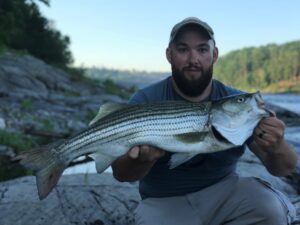
“We think it will be very impactful for us,” said Kusnierz. “We’re very concerned about the PFAS getting into the reservation waters, and then the fish and the wildlife and the plants, things that the tribe relies on.”
Scientists are increasingly finding PFAS in freshwater fish across the US. A recent study found PFAS and PFAS precursors in recreational fish species across New Hampshire. In 2021 and 2022, the chemicals showed up in all 98 fish tissue samples tested in Kentucky creeks and lakes. PFAS have appeared in bodies of freshwater in Michigan, Massachusetts, and Maine.
A number of states have issued consumption advisories. However, Alissa Cordner, co-director of the PFAS Project Lab at Northeastern University, questions how well such advisories serve communities that depend on local fish as a regular food source.
PFAS is also becoming a concern for game hunters in some parts of the country. A “do not eat” advisory rattled Maine hunters last year after PFAS was detected in several Fairfield deer. Deer consumption advisories have also been issued for parts of New Hampshire, Michigan, and Wisconsin.
Disease and death
Tribal communities around the US are being hit particularly hard by the widespread contamination of fish and other wildlife traditionally relied on for food.
In South Carolina, research has found high levels of pollutants, including PFAS and PCBs in fish from the Charleston Harbor and its tributaries. PFOS levels measured in popular southern flounder and spotted seatrout fell within an advisory range suggesting the fish should only be eaten four times per month.
As a result, some members of the Gullah/Geechee Nation, whose people descend from enslaved West and Central Africans and who rely heavily on local fish, have been forced to cut the amount of fish they consume or seek food from outside of their communities, according to Queen Quet, leader of the Gullah/Geechee Nation.
“The chemical is detrimental to not only human health but to cultural tradition continuation,” she said.
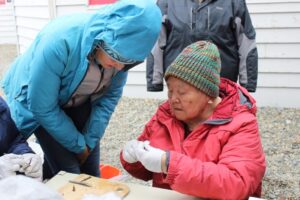
The Yupik Alaska Natives of Sivuqaq (St. Lawrence) Island, Alaska are also coming to terms with the contamination of their traditional foods. Toxic pollutants from far-off places have travelled northward through air and ocean currents, accumulating in the bodies of wildlife and humans on the island. Military bases and landfills in the area have also leached chemical contaminants into the Arctic environment, including PCBs, pesticides, and heavy metals.
A team of researchers that included community members recently documented PFAS and polybrominated diphenyl ethers (PBDEs), chemicals used as flame retardants, in many local hunted species.
“We found PFAS in the bowhead whale, which is probably the most important of the traditional foods for the people of Sivuqaq, [and in] seals, as well as walrus,” said Pam Miller, founder and executive director of the nonprofit advocacy group Alaska Community Action on Toxics (ACAT).
“Most people think the Arctic is the last frontier and pristine,” said Viola Waghiyi, a member of the Yupik tribe from Sivuqaq and a researcher with ACAT. “We’re being exposed without our consent through our traditional foods that have sustained our people through millennia. “It’s not something we can just stop doing – it’s our being, it’s our identity, it’s our culture.”
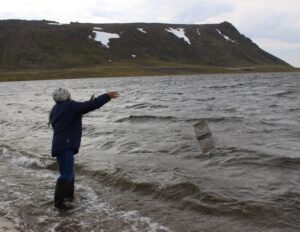
The researchers have also identified likely connections between pollutants that enter tribe members’ bodies from the animals they eat and the health problems that riddle Sivuqaq. In a 2018 study, they found evidence suggesting some PFAS chemicals in community members’ bodies may be disrupting their thyroid hormones.
Waghiyi said she has suffered from cancer, as have three other members of her family.
“I just buried my brother,” she said. “He courageously fought cancer for seven years. I’m going to go see his sister who has heart disease. I’ve had three miscarriages. My mom has had stillbirths, heart disease, diabetes, illnesses never seen before in our people.
“Help is not coming fast enough for our generation.”
(Featured image by the Gullah/Geechee Sea Island Coalition.)
 EWG
EWG